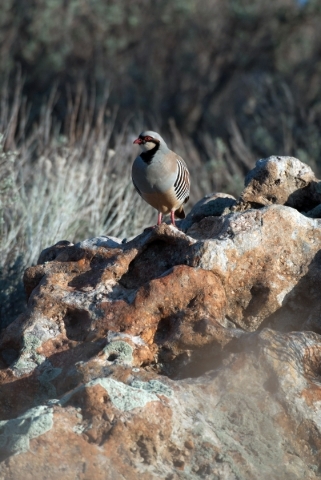Chukar hunters should set sights on Utah


Hunters looking to bag a few chukars this fall may want to turn at least part of their hunting attention north and east to the Beehive State. Utah’s chukar numbers are the highest they have been in 17 years.
According to the Utah Division of Wildlife Resources, population surveys put chukar numbers at 101 birds per square mile in Toole County, a milestone that only has been reached once in the past 20 years. In 1998, biologists observed the previous high of 117 birds per square mile in survey areas.
Elsewhere in Utah, hunters can expect to find higher than average chukar numbers even if they don’t quite reach that 100-bird-per-square-mile mark.
Jason Robinson, upland game coordinator for the DWR, said such peaks in chukar populations are a rare event. “I encourage hunters to get into the field and take advantage of it,” he said.
Two primary factors play important roles in population spikes such as Utah is experiencing this year. The first is weather, and the second is a population cycle.
“The winter was warm and mild,” Robinson said, “and most of the adult birds made it through. The birds were in good condition as they entered the breeding season. That allowed the females to lay plenty of eggs.”
Those conditions were followed by a wet May, which produced bumper crops of green vegetation and insects, both a primary food sources for new chicks. In Nevada, biologist are crediting May rain storms with saving the Silver State’s chukar season.
“Without moisture received during (May) and into June, the upcoming chukar season would likely have been a complete “bust,” said Shawn Espinosa, upland game biologist for the Nevada Department of Wildlife. “They just needed that extra moisture to have a good hatch this year, and it looks like that’s what happened.”
Though biologists are unsure why it occurs, Utah’s chukar population tends to cycle high, or spike, about every eight years. The last peak was in 2006 when bird numbers nudged the 100-birds-per-square-mile mark. Before that, it occurred in 1998.
Nevada’s chukar population hasn’t hit the record numbers found in Utah, but Espinosa said hunters should expect to find hunting conditions similar to those of the 2014-15 hunting season. He anticipates some of the best success to come early in the season.
The most productive hunting is generally found in the northern counties, but there are populations of chukar scattered throughout Southern Nevada. Places to look include Gold Butte, the mountains between Interstate 15 and Caliente and east of Highway 93, the mountains near Beatty and those north of the Tonopah Test Range.
In Utah, hunters will find the highest concentration of birds in Toole, Juab and Millard counties in areas located west of Interstate 15. Robinson said other places hunters might consider looking for chukars are the rocky river corridors of Southern Utah and the Book Cliffs east of Price. Even the foothills of the Wasatch Front hold chukars.
In Arizona, chukars can be found in the northwest corner of the state north of the Colorado River. According to the Arizona Game & Fish Department, “Mild winters combined with expanding cheat grass on the Arizona Strip are both benefiting chukar range expansion. Chukar populations should again be in good numbers for this year.”
Arizona’s chukar season is already underway. It started Sept. 4 and runs through Feb. 7. The daily bag limit is five birds, and the possession limit is 15. In Utah, the general chukar season opens Sept. 26 and continues through Feb. 15. The bag and possession limits are five and 15.
In Nevada, the season dates are Oct. 10 through Feb. 7, but the bag and possession limits are a little more generous. The daily bag limit is six chukar, and the possession limit is 18.
Freelance writer Doug Nielsen is a conservation educator for the Nevada Department of Wildlife. His “In the Outdoors” column, published Thursday in the Las Vegas Review-Journal, is not affiliated with or endorsed by the NDOW. Any opinions he states in his column are his own. He can be reached at intheoutdoorslv@gmail.com.












